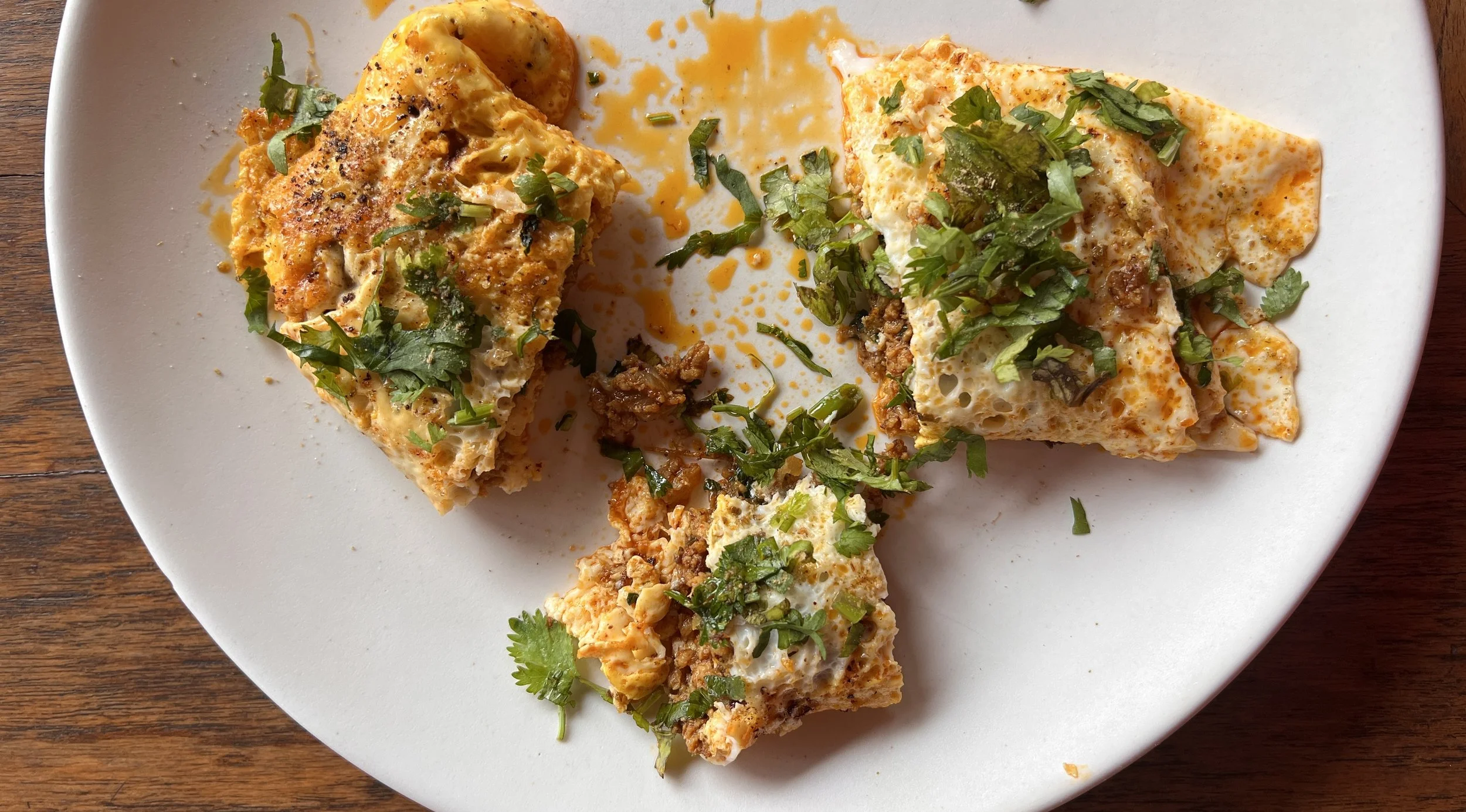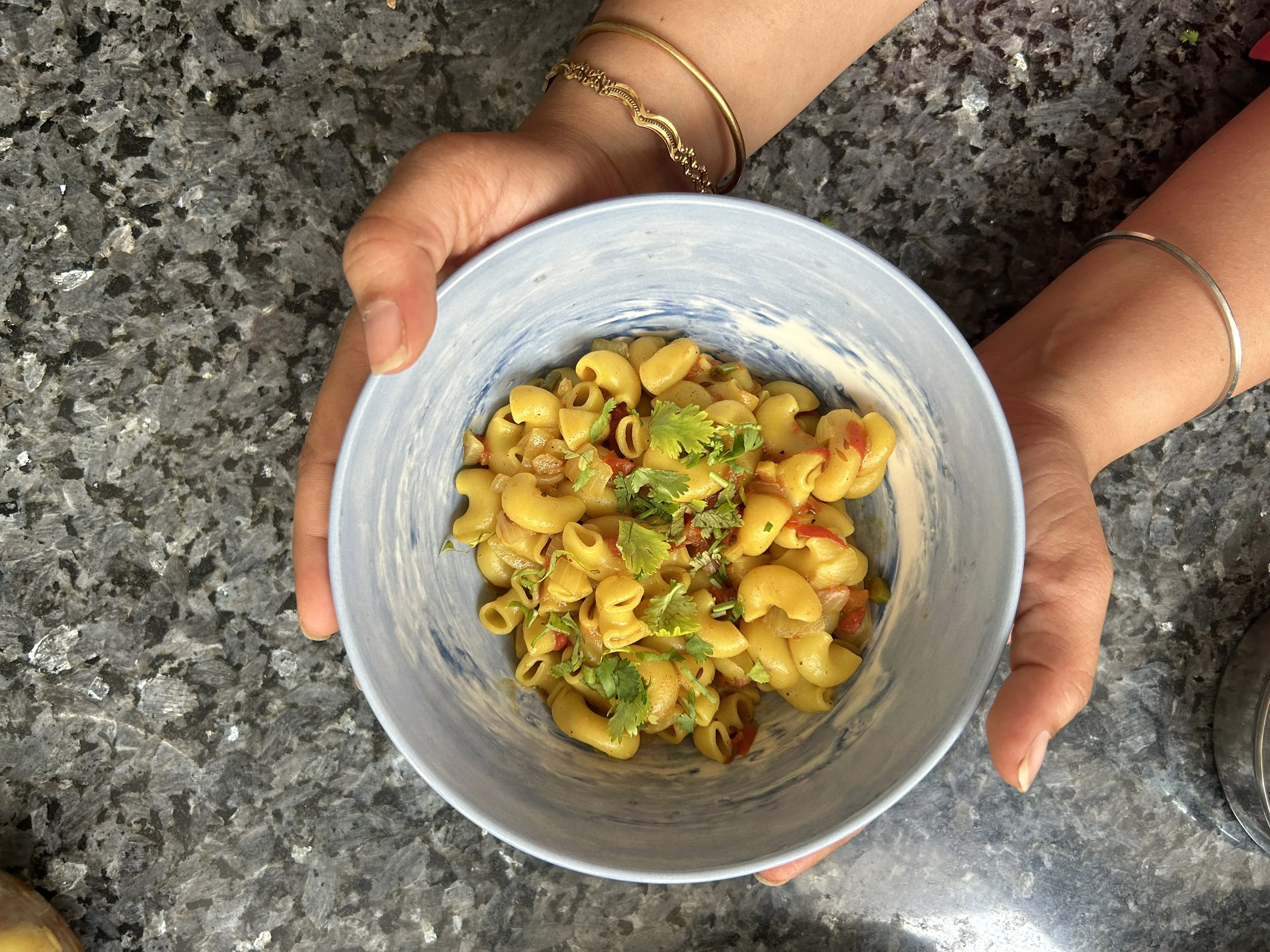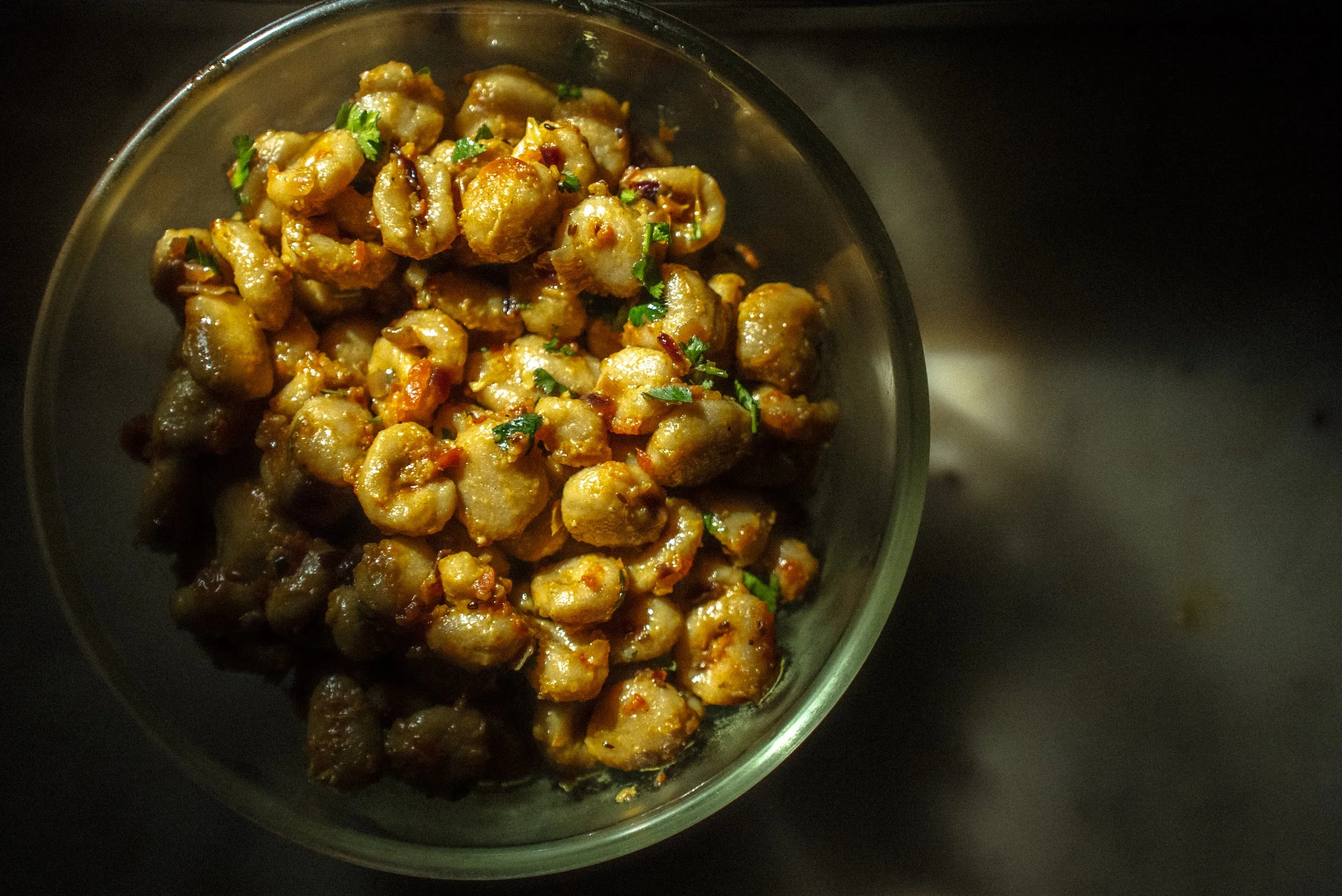The MSG Story: Culinary Ally or Cultural Scapegoat?

MSG has been a polarising ingredient for the last several decades. Its narrative has been tainted by myth, misinformation and xenophobia. Devrupa Rakshit explores MSG’s journey from flavour enhancer to cultural scapegoat to culinary ally.
Monosodium glutamate — usually called MSG or Aji-no-moto (which is actually a brand name that has now become ubiquitous with the product, much like Xerox) — is among the most polarising ingredients in global cuisine today. It is essentially umami — the so-called ‘fifth taste,’ which is neither sweet, nor salty, or sour, or bitter — in its purest form. It is the savoury essence that makes foods rich and satisfying, the unsung hero that seamlessly integrates into dishes, adding complexity without overpowering natural flavours.
But, despite its reputation for amplifying flavours, the ingredient has been demonised for years, enduring a reputation tainted by myths, misinformation, and even xenophobia As we are becoming more aware of the ways racism informs our perspectives, though, MSG’s journey from a beloved flavour enhancer to a cultural scapegoat might soon — one hopes — be a lesson in history.
The story of MSG’s rise and fall and rise-again speaks to the “audacity of culinary caucasity,” as Puja Sen, a multi-disciplinary food industry expert and chef from Bengaluru, puts it. But how did it come to be?
Image: DoorDash. Illustrations: Devrupa Rakshit
The MSG Myth
It began in 1968 — on a large scale, at least — when Robert Kwok, a biomedical researcher, published an article in the New England Journal of Medicine, titled the ‘Chinese-restaurant Syndrome,’ effectively blaming MSG for adverse reactions allegedly linked to Chinese food. Kwok’s unfounded claim aligned with the anti-Asian sentiment thriving in mid-20th century America, which had already attempted to cap Chinese immigration in 1882 through the Chinese Exclusion Act.
Very soon, a now-infamous article appeared in The Chicago Tribune titled, ‘Chinese Foods Make You Crazy? MSG Is No. 1 Suspect’ — painting Asian cuisines as unhealthy and inferior. As Sen notes, Chinese restaurants were one of the few entrepreneurial avenues available to immigrants around that time. Kwok’s article, and the media frenzy that followed in its aftermath, turned these sites into targets of suspicion. And just like that, the reputation of MSG — first extracted from seaweed broth by Japanese professor Kikunae Ikeda in the 1900s — was sullied for decades to come.
But was Kwok — and the scientists and researchers who agreed — lying through his teeth? Not entirely, however they were certainly exaggerating the impact of MSG on the human body. Explaining how, Amanda Li, a registered dietitian nutritionist at UW Medical Center, Montlake, states, “These studies used doses 5 to 30 times what would be considered a normal amount and used delivery methods such as tubes going directly into the stomach or via injections, instead of a normal route by mouth with food.”
“Recognising MSG not as a villain but as an essential seasoning is more than about defending a compound; it is about honouring a history of migration, innovation, and resilience. MSG tells the story of survival, adaptation, and the universal pursuit of deliciousness”
In an award-winning paper published in Social History of Medicine in 2009, Canadian food historian Ian Mosby wrote, “Chinese restaurant syndrome was, at its core, a product of a racialised discourse that framed much of the scientific, medical and popular discussion surrounding the condition. This particular debate brought to the surface a number of widely held assumptions about the strangely ‘exotic’, ‘bizarre’ and ‘excessive’ practices associated with Chinese cooking which, ultimately, meant that few of those studying the Chinese restaurant syndrome would question the ethnic origins of the condition.”
Explaining what prompted him to a deep-dive into this topic, he stated, “I was curious as to why Chinese restaurants often had prominent 'No MSG' signs in their windows and on their menus even though MSG was a common ingredient in all kinds of processed foods ranging from potato chips to canned soup.”
A Healthier Alternative to Sodium?
And it’s true, MSG is everywhere. Contrary to racist rhetoric, MSG isn’t merely an ‘additive’; it is a naturally-occurring amino acid present in a variety of everyday foods — including grapes, tomatoes, and mushrooms. It’s often present in soy and dairy products, too, besides meat, eggs, and fish. As someone conditioned to be wary of MSG, as a child raised in a Bengali household in Jamshedpur, this was a revelation to me. “What do you mean — it won’t diminish my brain function or give me headaches and cancer?!”
Image: Particle (Powered by SciTech) Australia, Healthline, Lid&Ladle by Sur La Table, Business Insider. Illustration: Devrupa Rakshit
Further, MSG can actually serve as a healthier alternative to table salt because it contains only one-third the amount of sodium as table salt. In simpler terms, it can reduce sodium intake without sacrificing on flavour. “[T]here is an urgent need to redefine our dietary sodium practices to align with healthier standards. This is where MSG offers a promising solution,” Dr. Eram Rao, a professor of food technology at the Bhaskaracharya College of Applied Sciences, University of Delhi, had noted.
In fact, as Subhanwita Sarkar, an expert in biochemistry and molecular biology points out, MSG also amplifies the flavour and taste of food, making it more palatable for the elderly who suffer taste and smell losses with age, curbing their appetite and reducing their dietary intake.
Sarkar notes, though, that like with any ingredient, it’s possible that MSG doesn’t suit some people. As scientist and writer Christie Hartman, who specialises in science-based health, wrote: “MSG allergy does not exist, but MSG sensitivity may be a real thing.” But as research shows, these ‘symptoms,’ if any, are usually mild and don't require medical treatment. What’s also interesting is that given the lack of scientific evidence backing adverse reactions to consuming MSG in food, it’s quite possible that people who report adverse reactions to MSG are simply experiencing a nocebo effect — the evil twin of placebo effect — which is the phenomenon of a negative outcome occurring due to the belief, expectation, or suggestion that something will cause harm.
Irrespective, it’s easy to avoid adverse reactions to MSG by… well, choosing not to consume it. This is easy since food regulations in most parts of the world require every ingredient used in a product to be listed on the label. So under no circumstance, does it make sense to completely ban something that is, arguably, a lot less dangerous than, say, the widely available peanuts, which almost 2% of the general population is allergic to — some, even fatally so. Just because something doesn't suit a few people, doesn’t mean it should be deemed illegal.
MSG Gets a Reboot
Recent years have thus seen a resurgence of interest in MSG, fueled by chefs, food scientists, and social media influencers championing it as an essential seasoning, and debunking myths in the process. In fact, food scientist Krish Ashok has gone on record to say, “Parmesan cheese is White people[‘s] MSG” — because it is usually associated with Italian food and not Chinese, it hasn’t been a victim of racism.
The myth-busting is working. Sen, who holds a dual degree from the Culinary Institute of America and The Hotel School at Cornell University, notes, “Perceptions around MSG have slowly started to shift, particularly among younger, more informed diners and chefs.” Recalling one of her first jobs at at Buddakan in New York City — a swanky, popular, 325-seater restaurant that featured in Sex and The City: The Movie — she says, “On the line, we used to have a squeeze bottle of 'magic water' which we would use to season everything. Before the shift started the sous chef would make a large batch of MSG+water as per the correct ratio and then divide it up into squeeze bottles for all stations.”
Location: All Stir Fry, Gordon House Hotel, Mumbai. Illustration and Photography: Devrupa Rakshit
But pockets of resistance still exist, Sen laments, commenting on her encounters with diners who specifically request MSG-free dishes, or express concern when they find out their food contains the ingredient. “I’ve found that transparency helps. When I explain what MSG is, how it functions, and its natural presence in foods like tomatoes or cheese, most people are more open to it. It’s frustrating at times because the resistance is often less about science and more about a decades-old narrative rooted in xenophobia,” she says.
This perception is prevalent in India, too. I remember my mother and aunts vigorously warning me against eating outside before I left to stay in a hostel in Calcutta for college, almost hyperventilating about the aji-no-moto that’ll destroy my health. Funnily, though, while MSG isn’t traditionally associated with Indian cuisine, the principles of umami are deeply embedded in our culinary landscape, too. From fermented batters to dried fish and rich gravies, Indian dishes often deliver the same savoury notes that MSG enhances — making the ingredient align perfectly with our cuisine’s inherent umami profile.
“That MSG isn’t the poison we’ve made it out to be has been well-established… [But e]ven when the science is clear, it takes a lot to overwrite a stigma, especially when that stigma is about more than just food,” Anna Maria Barry-Jester, a public health reporter, wrote in 2016, citing how, “Yelp reviews of Chinese restaurants tell tales of racing hearts, sleepless nights and tingling limbs from dishes ‘laden with MSG.’”
Summing up the racist history behind the vilification of MSG by Western culinary elitism, Sen says, “Recognising MSG not as a villain but as an essential seasoning is more than just defending a compound; it’s about honouring a history of migration, innovation, and resilience. MSG tells stories of survival, adaptation, and the universal pursuit of deliciousness.”
MSG’s journey is a testament to the power of science and cultural advocacy. Once vilified through a toxic mix of racism and misinformation, it is now regaining its rightful place as a culinary ally. By embracing MSG with an open mind — and palate — we can challenge outdated biases and celebrate the ingredient for what it truly is: a flavour enhancer with the potential to transform how we cook and eat.
Devrupa Rakshit is an award-winning independent journalist, seasoned communications professional and an artivist focusing on the intersections of mental health, gender, and social justice, particularly through the lens of disability and neurodivergence.
ALSO ON GOYA












